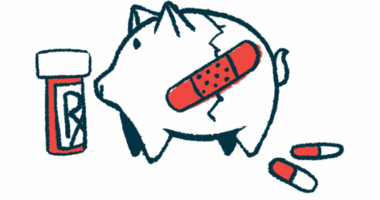Promoting Amyloidosis Awareness to Create a Better Future
We must all work to reduce inequity in healthcare access for rare diseases

Late last week, to drive disease awareness, I took to the streets in downtown Auckland, New Zealand, and asked random people if they had heard of amyloidosis. None of the 15 strangers who were kind enough to answer my questions had heard of it. This does not surprise me when even general practitioners don’t acknowledge the condition when diagnosing their patients.
As an advocate for the New Zealand Amyloidosis Patients Association and a caregiver to my late husband, Aubrey, who suffered from hereditary ATTR amyloidosis, I feel a pressing need to make society take notice of illnesses that are described as “rare.”
I believe it is a misnomer to call hATTR rare, because it almost discounts the condition and undermines its impact on sufferers and their loved ones. Rare does not necessarily equate to fewer people, because collectively, about 300 million people worldwide suffer from a lesser-known condition.
The misdiagnosis problem
Recently, I had the pleasure of meeting a mother whose daughter was diagnosed with mosaic trisomy 9, a rare genetic condition. She shared the challenges she faced when trying to find out what her daughter’s condition was. Her child was given countless treatments that didn’t work due to a misdiagnosis. She felt intense relief when the doctors were finally able to correctly provide a name for the condition.
Not knowing which illness someone has is difficult. My late husband also experienced misdiagnosis. In this chasm of obscurity, the sufferer and the carer trip around in circles, not knowing what to do, determined to overcome the burden of seeking answers.
Rare conditions are a public health issue that the healthcare systems of countries, the global disease community, and society itself need to start paying more attention to.
The treatment access problem
The lack of attention to, and concern about, rare diseases in many parts of the world, including New Zealand, have led to many unnecessary deaths, including my husband. His family, for example, lives in the United Kingdom, and some of his family members were diagnosed with the same genetic condition he had, yet they are doing well. They are fortunate to be looked after at the National Health Service’s National Amyloidosis Center, at the University College London Center for Amyloidosis and Acute Phase Proteins, where they have access to targeted treatment.
As a result of our location, we never imagined that where we lived would determine how long we got to thrive. The disparity and inequitable access to medicine due to locale meant that we had to work harder to meet our needs.
October 26 was World Amyloidosis Day. Patient advocates worldwide, including myself, stand together at this annual event to make our voices heard by all. Change starts with awareness. Hopefully, one day, treatment will be available to all, no matter where they live.
Note: FAP News Today is strictly a news and information website about the disease. It does not provide medical advice, diagnosis, or treatment. This content is not intended to be a substitute for professional medical advice, diagnosis, or treatment. Always seek the advice of your physician or other qualified health provider with any questions you may have regarding a medical condition. Never disregard professional medical advice or delay in seeking it because of something you have read on this website. The opinions expressed in this column are not those of FAP News Today or its parent company, Bionews, and are intended to spark discussion about issues pertaining to familial amyloid polyneuropathy.








Leave a comment
Fill in the required fields to post. Your email address will not be published.